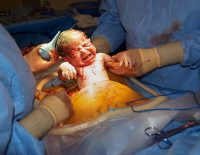AIIMS develop method for diagnosing Primary Ciliary Dyskinesia (PCD), a rare genetic disorder

In a major stride for rare disease diagnostics, the All India Institute of Medical Sciences (AIIMS), New Delhi, have developed a powerful new method for diagnosing Primary Ciliary Dyskinesia (PCD), a rare and often misdiagnosed genetic disorder affecting the respiratory system.
The hospital said this technique, built around transmission electron microscopy (TEM), is set to revolutionize the way ciliary disorders are detected and understood.
The breakthrough, led by experts at AIIMS’ Dr Subhash Chandra Yadav, Electron Microscope Facility, Department of Anatomy and Prof Kana Ram Jat, Department of Paediatrics, was recently published in the prestigious journal Microscopy and Microanalysis (University of Oxford), under the title “An Innovative TEM-Based Ultrastructural Imaging Methodology for the Diagnosis of Respiratory Ciliary Disorders.”
This advanced method improves diagnostic accuracy dramatically, identifying structural defects in motile cilia in nearly 70 per cent of suspected cases. Validated on 200 patients with suspected ciliary disorders, the technique confirmed diagnoses in 135 cases, said the hospital.
“The scope of this technique extends far beyond PCD. It can accurately detect a range of rare ciliary disorders related conditions, including respiratory anomalies, renal cystic disease, blindness, neural tube defects, intellectual disability, skeletal abnormalities (such as polydactyly and abnormally short limbs), ectodermal defects, situs inversus (a condition where internal organs are mirrored), and infertility”, said AIIMS.







